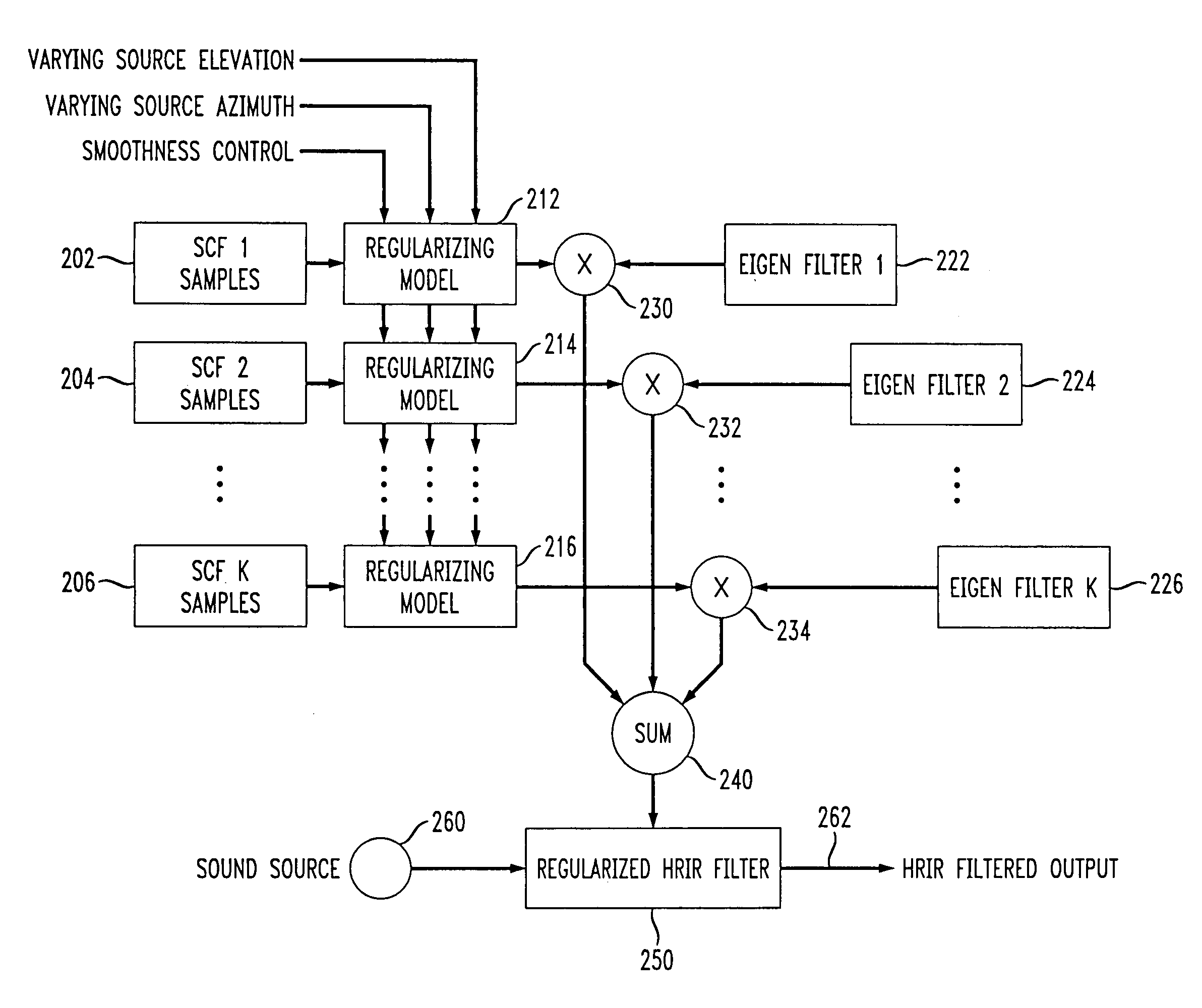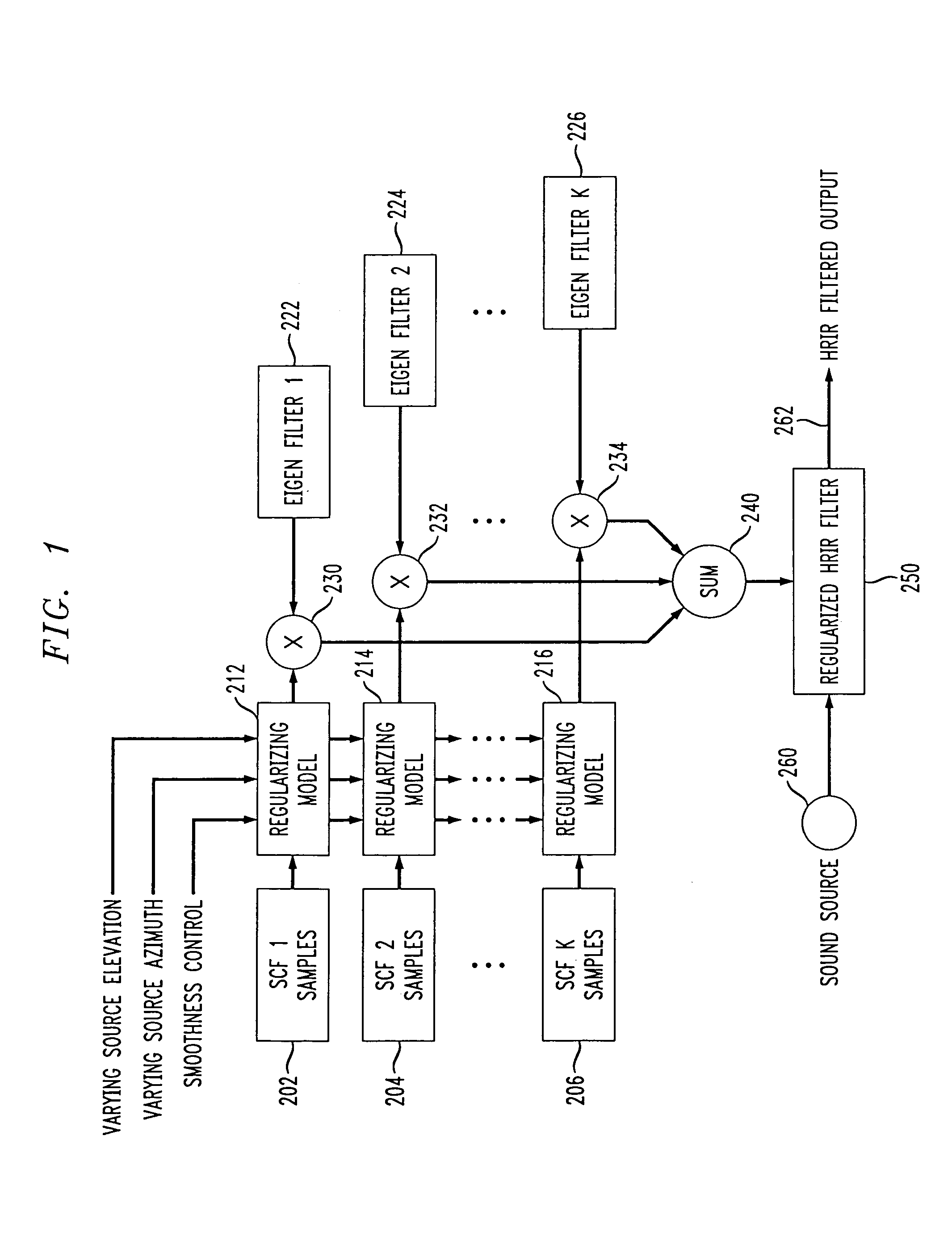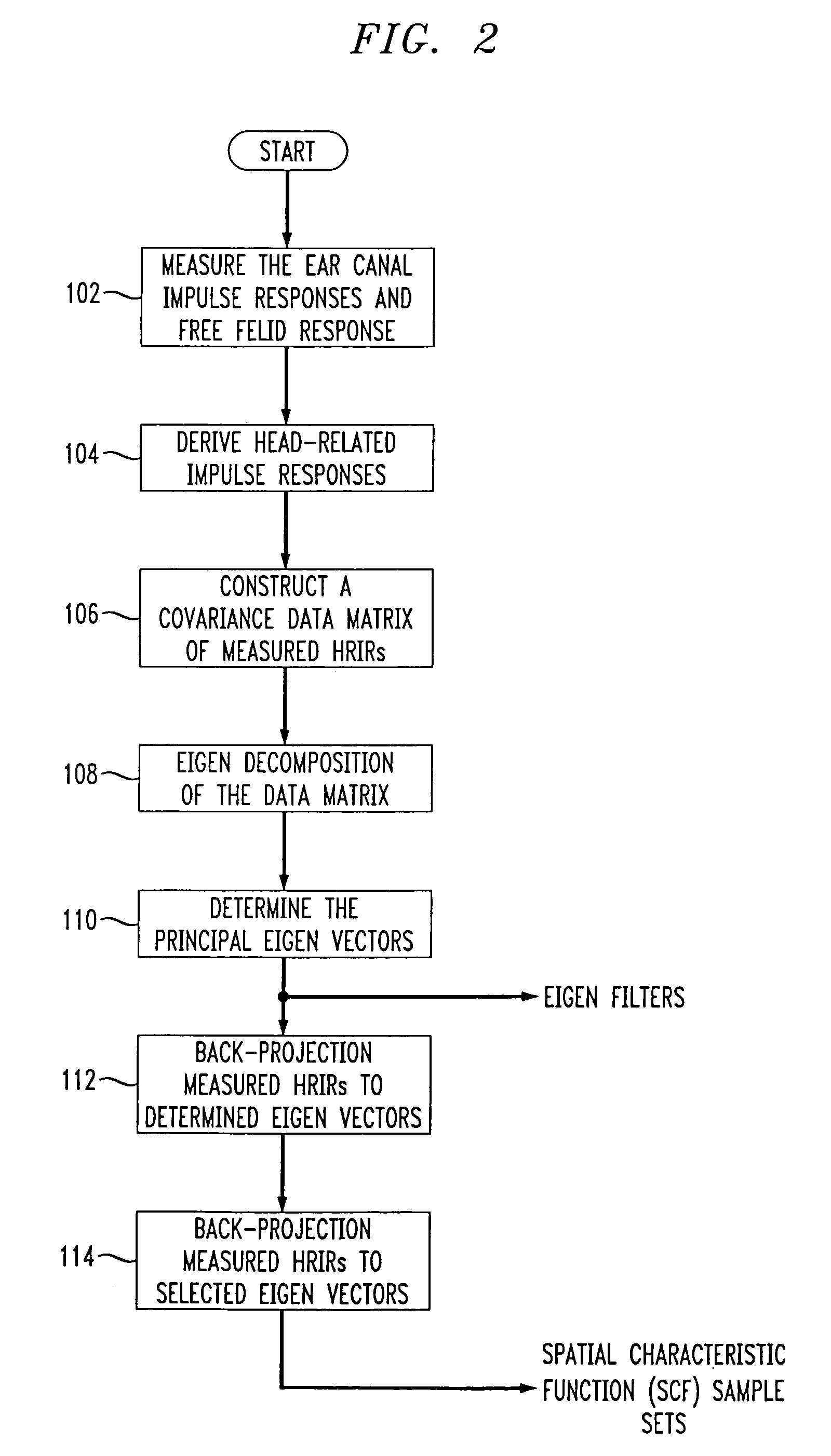Method and apparatus for regularizing measured HRTF for smooth 3D digital audio
a digital audio and measurement method technology, applied in the field of three-dimensional (3d) sound, can solve the problems of not providing the continuum of hrtf function, measuring error in measured hrtf, and not smooth, and achieve the effect of high quality
- Summary
- Abstract
- Description
- Claims
- Application Information
AI Technical Summary
Benefits of technology
Problems solved by technology
Method used
Image
Examples
Embodiment Construction
[0018]Conventionally measured HRIRs are obtained by presenting a stimulus through a loudspeaker positioned at many locations in a three-dimensional space, and at the same time collecting responses from a microphone embedded in a mannequin head or a real human subject. To simulate a moving sound, a continuous HRIR that varies with respect to the source location is needed. However, in practice, only a limited number of HRIRs can be collected in discrete locations in any given 3D space.
[0019]Limitations in the use of measured HRIRs at discrete locations have led to the development of functional representations of the HRIRs, i.e., a mathematical model or equation which represents the HRIR as a function of time and direction. Simulation of 3D sound is then performed by using the model or equation to obtain the desired HRIR or HRTF.
[0020]Moreover, when discretely measured HRIRs are used, annoying discontinuities can be perceived by the listener from a simulated moving sound source as a se...
PUM
 Login to View More
Login to View More Abstract
Description
Claims
Application Information
 Login to View More
Login to View More - R&D
- Intellectual Property
- Life Sciences
- Materials
- Tech Scout
- Unparalleled Data Quality
- Higher Quality Content
- 60% Fewer Hallucinations
Browse by: Latest US Patents, China's latest patents, Technical Efficacy Thesaurus, Application Domain, Technology Topic, Popular Technical Reports.
© 2025 PatSnap. All rights reserved.Legal|Privacy policy|Modern Slavery Act Transparency Statement|Sitemap|About US| Contact US: help@patsnap.com



